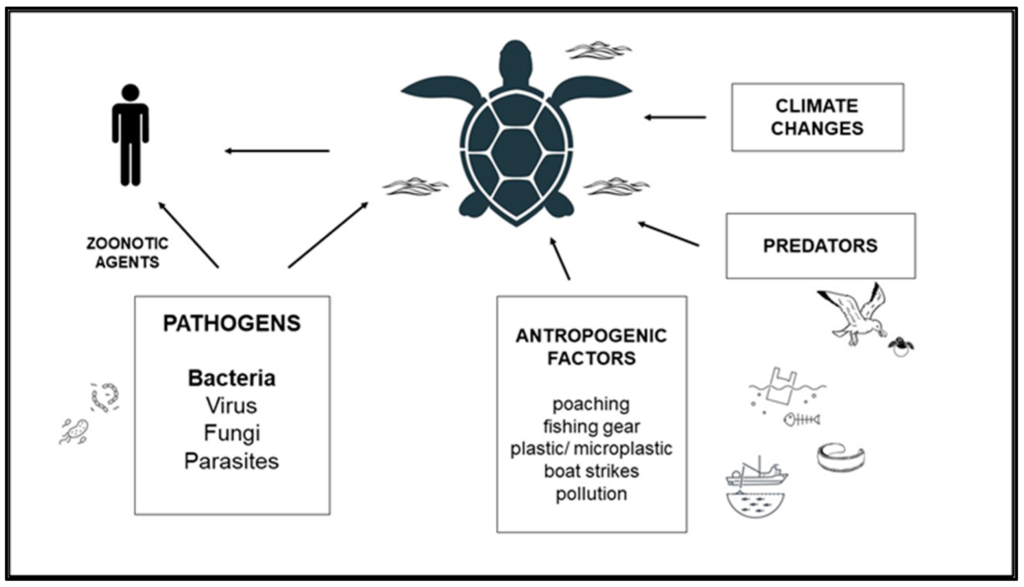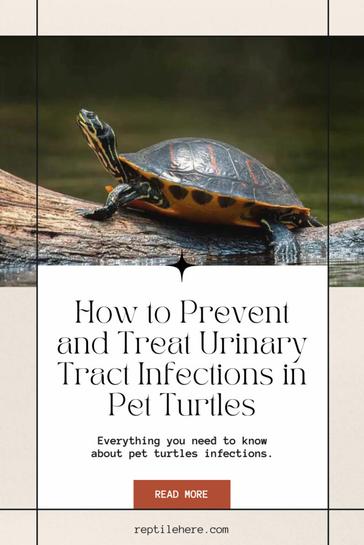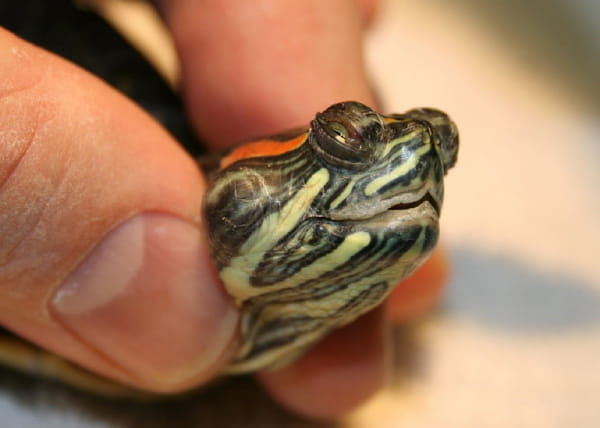In this article, you will learn about the importance of preventing and treating parasitic infections in baby turtles. We will discuss why these infections are common in turtles, how they can be transmitted, and the signs to watch out for. You will also find out about the different methods of prevention and treatment that can help keep your baby turtle healthy. By the end of this article, you will have a better understanding of how to protect your baby turtle from parasitic infections. Parasitic infections can be a common issue for baby turtles, both internally and externally. These infections can cause significant harm to the turtles if left untreated, leading to changes in behavior, loss of appetite, and even long-term health issues. However, by taking proactive steps to prevent and treat these infections, you can ensure the well-being of your baby turtles and increase their chances of a full recovery. In this article, we will discuss the types of parasitic infections in baby turtles, signs and symptoms to look out for, preventive measures, proper nutrition, regular cleaning and maintenance, identification methods, treatment options, rehabilitation and recovery, educating turtle owners, common mistakes, and the importance of early intervention.

Types of Parasitic Infections in Baby Turtles
Internal Parasites
Internal parasites are organisms that live inside the baby turtle’s body and can affect various organs such as the intestines, liver, and lungs. Common internal parasites in baby turtles include roundworms, tapeworms, and flukes. These parasites can cause digestive issues, weight loss, and even organ failure if not properly treated.
External Parasites
External parasites, on the other hand, live on the baby turtle’s skin or shell. These parasites include ticks, mites, and leeches. They can lead to skin infections, irritation, and discomfort for the turtles. If left untreated, these external parasites can weaken the turtle’s immune system and make them more susceptible to other illnesses.
Signs and Symptoms of Parasitic Infections in Baby Turtles
Changes in Behavior
One of the first signs of a parasitic infection in baby turtles is changes in their behavior. They may become lethargic, inactive, and spend more time basking or hiding. They may also exhibit unusual swimming patterns or show signs of distress. If you notice any significant changes in your baby turtle’s behavior, it is essential to closely monitor them for other symptoms of a parasitic infection.
Loss of Appetite
A loss of appetite is another common symptom of parasitic infections in baby turtles. Turtles infected with parasites may refuse to eat or show a reduced interest in their food. This loss of appetite can lead to malnutrition and weaken their immune system, making it harder for them to fight off the infection.
Preventing Parasitic Infections in Baby Turtles
Maintaining Clean Water
One of the key preventive measures for parasitic infections in baby turtles is maintaining clean water in their enclosure. Regularly clean and filter the water to remove any debris or organic matter that may harbor parasites. Ensure that the water temperature and pH levels are suitable for the turtles’ well-being. Additionally, avoid using tap water directly in the enclosure as it may contain chemicals that can harm the turtles.
Quarantining New Turtles
If you are introducing a new baby turtle to your existing turtle population, it is crucial to quarantine the new turtle first. This measure helps prevent the spread of any potential parasites or illnesses to the other turtles. Keep the new turtle in a separate enclosure for a few weeks and closely monitor its health before introducing it to the others.
Proper Nutrition for Baby Turtles
Providing a Balanced Diet
A balanced diet is essential for the overall health and immune system of baby turtles. They require a combination of commercial turtle pellets, fresh vegetables, and occasional live or frozen prey such as insects or small fish. Ensure that the food provided is appropriate for the size and species of your turtles. Feeding them a varied and well-rounded diet will help strengthen their immune system and make them less susceptible to parasitic infections.
Avoiding Contaminated Food
To prevent parasitic infections, it is crucial to avoid feeding baby turtles contaminated food. Avoid using live food sources, such as insects or fish, that may carry parasites. If you do choose to feed live prey, make sure to purchase them from a reputable source that ensures their health and hygiene. Additionally, thoroughly wash and clean any fresh vegetables before feeding them to the turtles to remove any potential parasites or bacteria.

Regular Cleaning and Maintenance of Turtle Enclosure
Removing Waste and Debris
Regular cleaning and maintenance of the turtle enclosure are vital to prevent the buildup of waste and debris that can attract and harbor parasites. Clean the enclosure at least once a week, removing any uneaten food, feces, or other organic matter. Use a gravel vacuum or siphon to remove debris from the bottom of the tank and replace the water regularly to maintain optimal cleanliness.
Maintaining Optimal Temperature
Maintaining the proper temperature in the turtle enclosure is essential for their health and well-being. Different species of turtles have specific temperature requirements, so it is vital to research and provide the optimal temperature range for your baby turtles. Proper temperature regulation helps prevent stress and weakened immune system, reducing the likelihood of parasitic infections.
Identifying Parasitic Infections in Baby Turtles
Microscopic Examination of Fecal Samples
One of the most effective ways to identify internal parasites in baby turtles is through a microscopic examination of their fecal samples. Collect a sample of the turtle’s feces and take it to a reptile-knowledgeable veterinarian who can perform a fecal examination. This examination helps identify the presence of any eggs or larvae of internal parasites, allowing for proper diagnosis and treatment.
Skin and Shell Examination
For external parasites, a visual examination of the baby turtle’s skin and shell can help identify any infestations. Look for the presence of ticks, mites, or leeches on the turtle’s body and inspect the shell for any signs of damage or abnormal growth. If you suspect an external parasite infestation, it is best to seek veterinary advice for proper diagnosis and treatment.

Treating Parasitic Infections in Baby Turtles
Prescribed Medications
Treating parasitic infections in baby turtles often requires the use of prescribed medications. Internal parasites are typically treated with anti-parasitic medications that target the specific types of parasites identified. External parasites can be treated with topical solutions or ointments that help eliminate the parasites. Always consult with a reptile-knowledgeable veterinarian for an accurate diagnosis and the appropriate medication for your baby turtles.
Administering Medication Properly
It is essential to follow your veterinarian’s instructions for administering medications to your baby turtles. This may involve mixing the medication with their food or orally administering it using a syringe. It is crucial to ensure that the turtles receive the correct dosage and complete the full course of treatment to effectively eliminate the parasites.
Manual Removal of External Parasites
Using Tweezers or Cotton Swabs
In some cases, manual removal of external parasites may be necessary, especially for larger parasites like ticks. Using tweezers or cotton swabs, carefully grasp the parasite near its head and pull gently but firmly to remove it. Be cautious not to crush the parasite or harm the turtle while attempting removal. However, manual removal should be done only if you are confident and comfortable doing so. It is always best to seek veterinary assistance for such procedures.
Avoiding Injury to the Turtle
When manually removing external parasites, it is crucial to avoid causing any injury to the baby turtle. Take your time and be gentle to minimize any stress or harm to the turtle. If you encounter any difficulties or feel unsure about the process, consult a reptile-knowledgeable veterinarian to ensure the procedure is performed safely and effectively.

Rehabilitation and Recovery of Infected Baby Turtles
Isolation from Other Turtles
Infected baby turtles should be isolated from other turtles during their recovery period. This helps prevent the spread of parasites or any other potential illness to the healthy turtles. Keep the infected turtle in a separate enclosure with appropriate temperature, clean water, and proper nutrition. Monitor their progress closely and seek veterinary assistance if their condition does not improve or worsens.
Regular Veterinary Check-ups
Regular veterinary check-ups play a crucial role in the rehabilitation and recovery of infected baby turtles. Schedule regular appointments with a reptile-knowledgeable veterinarian to monitor the progress of the treatment and ensure that the parasitic infection is fully resolved. This allows for timely adjustments in the treatment plan if necessary and helps prevent complications or relapses.
Educating Turtle Owners about Parasitic Infections
Informing about Risks and Prevention
Educating turtle owners about parasitic infections is essential for their awareness and the well-being of their turtles. Provide information about the common types of parasites, their risks, and the preventive measures that should be taken. Emphasize the importance of regular veterinary check-ups and the role of proper nutrition and maintenance in reducing the risk of infections.
Proper Handling and Hygiene
Proper handling and hygiene practices are crucial in preventing the transmission of parasites or other illnesses between turtles and humans. Educate turtle owners about the importance of washing hands before and after handling turtles and any equipment or supplies used for their care. Additionally, emphasize the significance of using separate utensils and tools when dealing with multiple turtles to prevent the spread of any potential infections.
Common Mistakes in Preventing and Treating Parasitic Infections
Neglecting Regular Vet Check-ups
One of the common mistakes turtle owners make is neglecting regular veterinary check-ups. Regular check-ups are essential for early detection and treatment of parasitic infections. By skipping or delaying these check-ups, you may miss the opportunity to diagnose and treat an infection in its early stages, which can significantly affect the overall health and recovery chances of your baby turtles.
Ignoring Behavior Changes in Turtles
Another common mistake is ignoring behavior changes in turtles. Turtles are resilient creatures, but changes in their behavior can often indicate underlying health issues, including parasitic infections. Pay attention to any changes in their activity level, appetite, or swimming patterns, and consult a veterinarian if you notice any significant deviations from their usual behavior.
Importance of Early Intervention in Baby Turtles
Increasing Chances of Recovery
Early intervention in parasitic infections is crucial to increase the chances of a baby turtle’s recovery. Timely diagnosis and treatment significantly reduce the damage caused by the parasites and help restore the turtle’s health. By promptly addressing the infection, you can minimize the potential long-term health issues and ensure a better quality of life for your baby turtles.
Avoiding Long-term Health Issues
Failure to intervene early in parasitic infections can result in long-term health issues for baby turtles. Untreated infections can lead to chronic organ damage, weakened immune system, and impaired growth. By taking proactive steps to prevent and address parasitic infections, you can protect your turtles from these potential health problems and provide them with a healthier and happier life.
Conclusion
Preventing and treating parasitic infections in baby turtles is essential for their overall health and well-being. By maintaining clean water, quarantining new turtles, providing a balanced diet, regular cleaning and maintenance, identifying infections, administering appropriate treatment, and educating turtle owners, you can significantly reduce the risk of parasitic infections. Remember to seek veterinary assistance for diagnosis and treatment, and never hesitate to reach out for professional guidance. By being proactive and vigilant, you can ensure that your baby turtles thrive in a parasite-free environment.

